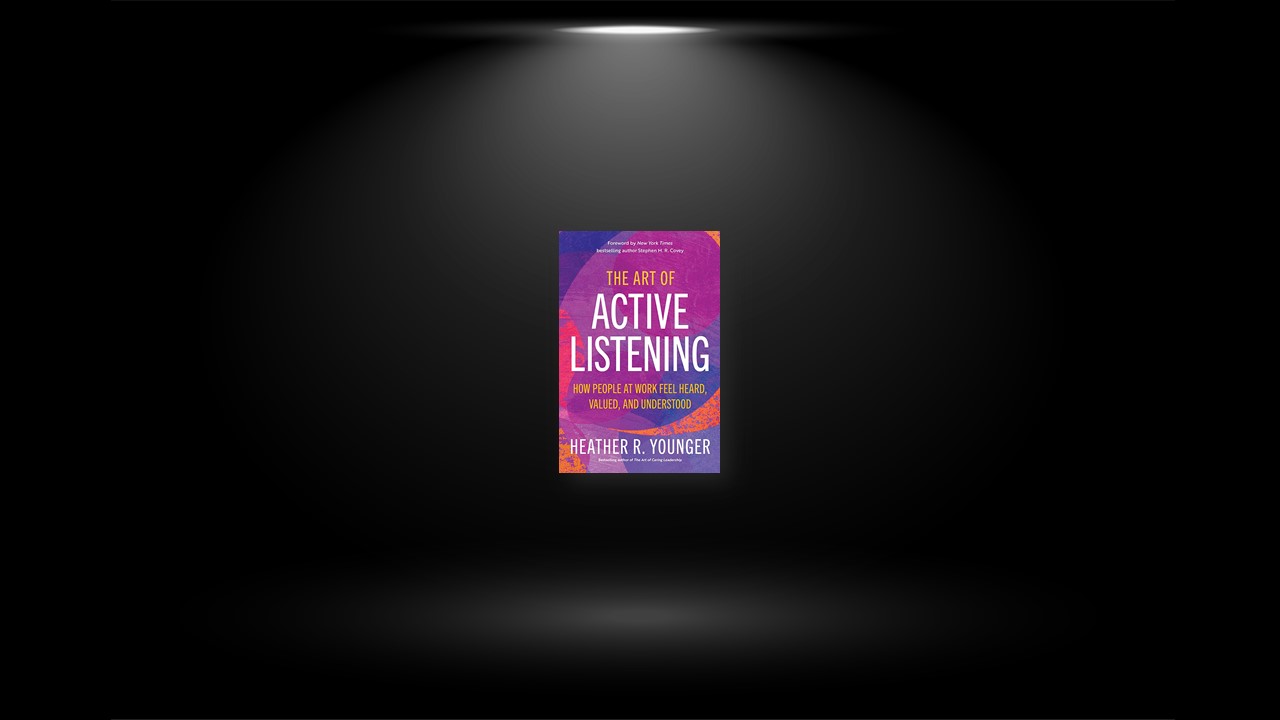Recognize the Unsaid
If you’re interested in transforming your ability to recognize the unsaid, you must start by cultivating a listening mindset that puts you in the best position to uncover what’s true. This advice holds true no matter your position at work. If you’re interested in transforming your ability to recognize the unsaid, you must start by cultivating a listening mindset that puts you in the best position to uncover what’s true—and that can require patience.
Cultivate a Listening Mindset
Recognizing the unsaid often starts with facing the unknown and being prepared for whatever the truth may reveal.
The temptation can be to bury our heads in the sand because we don’t feel prepared to deal with what could be an inconvenient reality. Even when the truth shines a light on where we need to focus our time and energy next, it might not seem timely or convenient to do so. One lesson the author has seen many organizations learn the hard way is the danger of avoiding feedback that’s ill-timed. It’s rarely surprising to hear leaders express how much they regret not taking the time to address that same feedback earlier.
Recognizing the unsaid can be an uncomfortable experience, but there is necessary growth in that discomfort. We must enter into every listening interaction with a desire to know the truth—and without assuming what that truth might be. Not only that, but once we discover the truth, we must be prepared to act on it.
Next time you’re working to recognize the unsaid, take a moment to pause and reflect on how you feel. Can you keep an objective mind and not take things personally? The more you do this, the more you’ll build confidence in your ability to detect nonverbal cues from others that help you piece together what’s happening beneath the surface.
#1 Seek to Understand
By recognizing what’s not being said and then seeking to better understand the truth you uncover, you’ll be in a position to move on to the next step in the Cycle of Active Listening. To become a better listener at work, you must seek to understand. That means stepping outside those experiences that shaped how you see the world, so you can gain an understanding of what drives other people.
#2 Lead with Curiosity
When you’re seeking to better understand others in similar ways, let down your guard enough to allow a sense of curiosity to shine through. Set your ego aside and see if you can maintain a sense of childlike wonder when listening to others. Put aside what you think might be true, and listen not for what you want to hear, but for what you want to learn.
our brain has a chemical response to curiosity. When we exercise curiosity, our brain secretes dopamine, an important brain chemical that influences our mood and feelings of reward and motivation. In turn, when someone listens to us, we experience this same secretion. That means seeking to understand starts a dopamine cycle that benefits everyone!
The opposite of being curious is being so wrapped up in our own problems that we don’t take the time to understand what’s important to someone else. If you’ve ever been around someone who didn’t give you the chance to finish your sentence before they cut you off, you know what it feels like to be on the receiving end of this treatment. This is the best way to make someone feel like you’re not listening to them. By keeping the focus on yourself, you have no hope of truly understanding anyone else.
#3 Decode
Decoding is your opportunity to connect the dots between what someone said and what you should do about it.
As you think about how to master the art of active listening, remember the importance of decoding before you take action, so that you know what to do next. You might be tempted to jump to conclusions, but instead give yourself space to interpret what someone shares with you. Reflect on what you hear before choosing whether and how to act. This reflection period lets the people in your presence see how important they are to you and helps you make informed decisions that will benefit more people in the long run.
How much reflection time is enough? There is no formula or cookie-cutter approach to deciding how much time you should take. We only have so many hours in a day, and this new way of listening feels time-consuming. Just know that the process is worth it, and the time commitment always depends on the circumstances. It’s more important that you be intentional about following the decoding process rather than following some preconceived time frame.
Practical Tips for Decoding
- First, remember that when someone shares something with you, they give you the gift of knowing what their wants and needs are. When you handle their words with care, you give them a gift in turn. When you keep this in mind, it will help you mentally prepare to decode from a place of understanding and gratitude.
- Next, never underestimate the power of blocking out time on your calendar to reflect on what you’ve heard. That might mean you send out an invitation to others suggesting you discuss the issue, or you go out of your way to research what you need to know on your own.
- Lastly, come up with a set of questions you want to reflect on each time. So, for example, those could look something like the following: What does this person require of me? Do I need to involve others? Do I need to do something about this feedback? Have I heard this feedback before? If so, how was it addressed? Where can I find out more information about this?
#4 Act
Think back on a time at work when you told someone you needed them to act on something, but they never did. How did that make you feel? Unheard? Unimportant?
Now, think back to a time when you told someone you needed them to act on something, and they did take action on your behalf. How did that make you feel? Heard? Important? Maybe less alone? We need to remember that for every action we take, there is an equal and opposite reaction
At some point in your life, you’ve heard of Newton’s famous third law of motion—or, as it’s more commonly known, the law of action and reaction. Just as jumping applies a force to the ground and the ground propels you into the air, so you can view the actions you take in response to active listening at work. When someone at work voices their concerns, and you act by hearing them out, you’re likely to receive a positive reaction—such as a strengthened relationship and maybe even increased productivity or engagement. On the other hand, if you choose not to address that person’s concerns, the consequences of your inaction will likely entail a negative reaction—such as a weakened relationship, low morale, a lost customer contract, or even someone’s resignation.
Barriers to Action
Often, the action we’re looking to take is tied to a problem that only a few can see. Some people live in denial of an issue—perhaps because they are frozen by the idea of change or are afraid of what it might mean for them. Some don’t see—or want to see—the negative impact of a problem, and so they never accept that there is a need for a fix.
Again, the best thing we can do in these situations is communicate in a way that people can understand and absorb. Listen first, and then explain. Answer questions, and bring people on the journey with you. Make them feel a part of what’s about to happen, because they are! After that, close the loop by staying in communication with them at every step along the way.
#5 Close the Loop
Often the authors see people following the first four steps—recognizing the unsaid, seeking to understand, decoding, and then taking action—and then everything grinds to a halt. In contrast, closing the loop says one of the following: • “I acted. Thank you for your feedback, and here’s what I did about it.” • “I can’t do anything about what you brought to my attention now, but I might be able to do something later.” • “I can’t do anything about X, but I can do Y.”
The same goes for customers. You can say, “We heard what you had to say, and here’s what we’re going to do about it,” or “We heard what you had to say, and here’s the end result. Thank you so much for the feedback.”
You go back to the person who gave you the feedback—whether in a survey or in a one-on-one interaction or group meeting—and let them know, “Thank you for your feedback. By the way, we heard you and here’s what’s next.”
When you validate the other person in this way, they infer, “I’m important to them. They respect my time. They respect my voice. They respect me, as a human. My feedback meant something to them.”
Closing the loop means you’re communicating that you are planning to act on the input you received, are in the process of acting on that input, or already have acted. A little gratitude here goes a long way. When you genuinely thank someone for their input, they feel your appreciation and are likely to feel more connected to you as a result.
This step completes the Cycle of Active Listening, but then the cycle starts all over again. Yes, you read that correctly. To be known as a great active listener, you have to be committed to doing it well, with everyone you encounter, and demonstrate your listening skills often. This is not a one-and-done proposition but something that should be an ongoing part of all your interactions. You simply keep working the steps.


